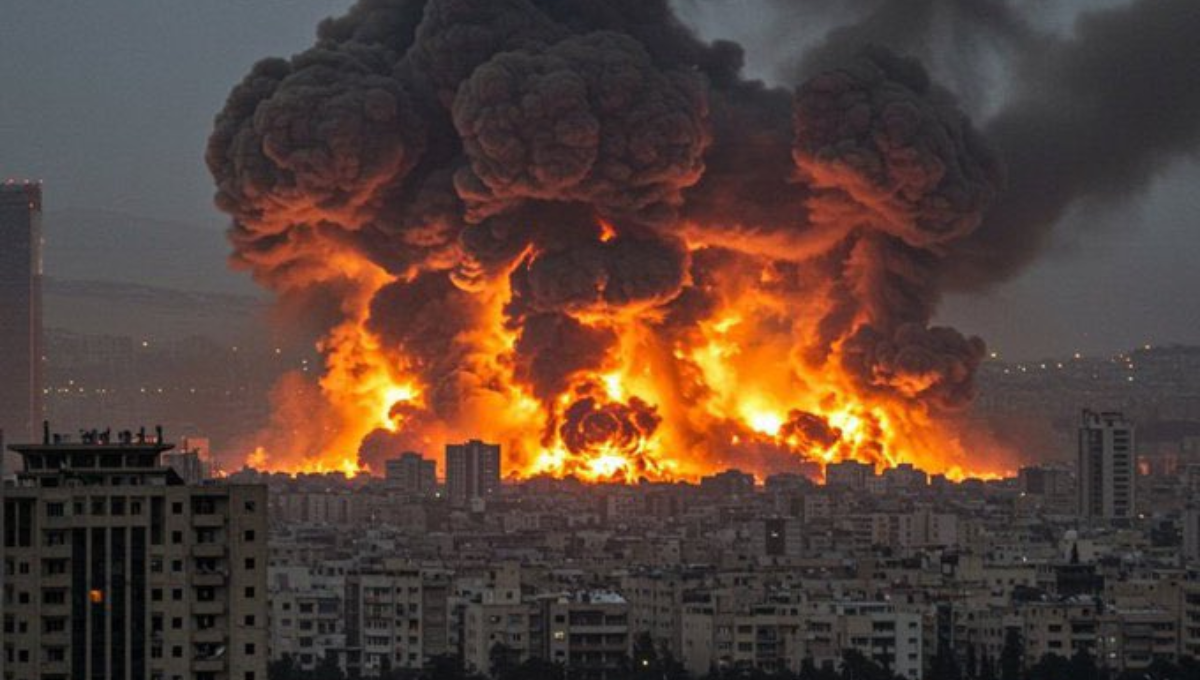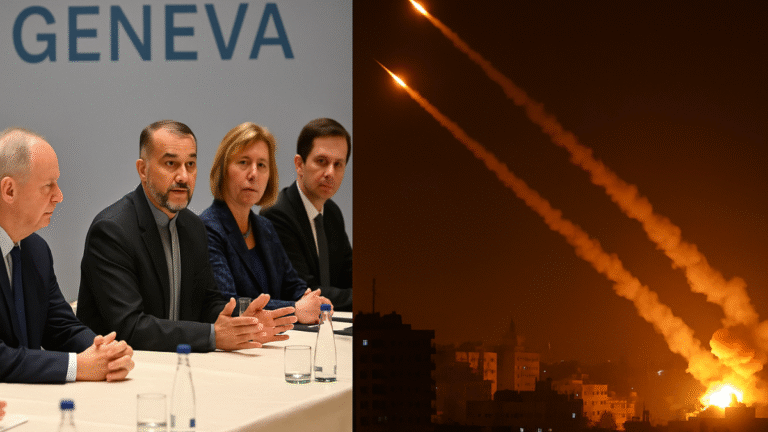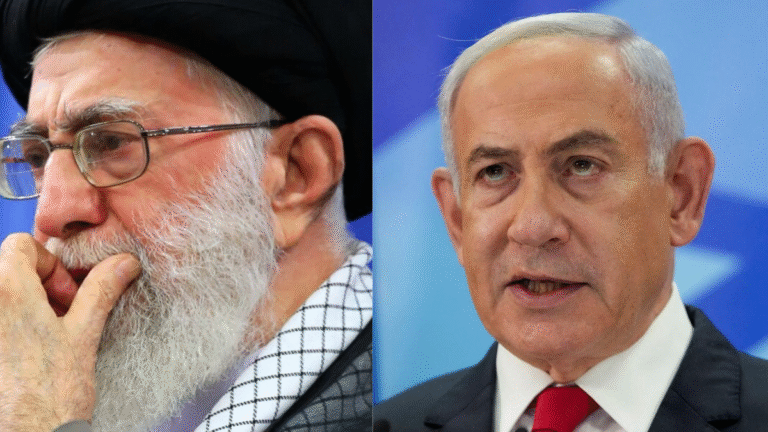US bunker buster attack on Iran: In a moment that could shape the geopolitical future of the Middle East, former U.S. President Donald Trump has declared that the United States has “obliterated” Iran’s nuclear enrichment facilities using powerful bunker buster bombs. As tensions spiral in the second week of the Israel-Iran air war, the world watches with bated breath. Trump’s bold claim, followed by sharp reactions from Iran and members of Congress, signals not just a military escalation but a potentially irreversible shift in global power dynamics. Amid the thunder of stealth bombers and ground-penetrating explosives, questions arise—about the legality, the ethics, and the sheer might of what has unfolded.
Israel-Iran Conflict Intensifies With Bunker Buster Deployment
On June 22, as the Israel-Iran conflict raged into its second week, the U.S. military executed precision airstrikes targeting three of Iran’s most fortified nuclear sites—Fordow, Natanz, and Isfahan. These facilities, built deep underground and shielded with reinforced concrete, have long been the cornerstone of Iran’s nuclear infrastructure. The strikes reportedly deployed the U.S.-made GBU-57A/B Massive Ordnance Penetrator—one of the most powerful bunker buster bombs in existence.
This action, carried out using stealth B-2 Spirit bombers, has reignited global debate. With these aircraft possibly launched from Diego Garcia or U.S. soil with mid-air refueling, the complexity and reach of the mission underscore just how far the U.S. is willing to go to halt Iran’s nuclear ambitions. The bombers were able to evade Iran’s radar systems, showcasing America’s military superiority and deepening Tehran’s vulnerability.

Trump later addressed the press, calling the mission a “spectacular military success” and asserting that Iran’s key nuclear facilities were “completely and totally obliterated.” Iran, on the other hand, described the strikes as a “savage assault” and warned that such “lawless actions” would not stop its nuclear development. The atomic energy agency of Iran pledged to continue its national program undeterred.
The GBU-57 Bunker Buster: A Rare Weapon of Destruction
At the heart of this dramatic offensive is the GBU-57A/B Massive Ordnance Penetrator (MOP), a bomb so powerful it can destroy targets buried over 200 feet underground. Weighing approximately 30,000 pounds, with a warhead containing 6,000 pounds of explosives, the GBU-57 is a specialized weapon designed for one purpose—annihilating heavily fortified and deeply buried structures.
The bomb uses a hardened steel casing and a delayed fuze system that allows it to burrow deep into concrete and soil before detonating. This unique engineering enables it to strike enemy nuclear facilities that are otherwise beyond the reach of traditional munitions. Only the stealth B-2 Spirit bomber can carry the GBU-57, which is another reason the June 22 strikes are so significant. These stealth aircraft, with their radar-evading technology and ability to deliver heavy payloads globally, are an asset only a superpower like the United States possesses.
Other Bunker Busters in U.S. Military Arsenal
While the GBU-57 stands out due to its sheer scale and penetration capabilities, the U.S. military has other bunker-busting options too. The GBU-28, developed during the Gulf War, weighs about 5,000 pounds and uses laser guidance to strike deep underground targets. Meanwhile, the GBU-37 is GPS-guided and effective in all weather conditions, ensuring precision even under cloud cover or in hostile conditions.
These weapons are equipped with advanced guidance systems, designed to reduce collateral damage while achieving pinpoint accuracy. The use of such bombs reflects a level of technological sophistication that is unmatched globally. They serve a critical purpose in modern warfare—destroying high-value, fortified enemy targets with minimal surface destruction.
Ethical and Legal Concerns Amid Rising Tensions
Despite their tactical advantages, the deployment of bunker buster bombs has raised serious humanitarian and legal concerns. These weapons, though not banned under international law, are controversial because of the potential for civilian casualties, especially when used in or near densely populated areas. The Geneva Conventions strictly prohibit indiscriminate attacks that could result in excessive harm to civilians.
These concerns have been voiced before. Just last year, Iran accused Israel of using U.S.-supplied bunker busters in strikes on Hezbollah targets situated beneath residential areas in Beirut. The fallout from that operation still lingers, and with the current U.S. strikes, those fears have resurfaced—this time with even greater urgency and scale.
U.S. Support for Israel and the Geopolitical Message
Over the years, the United States has consistently armed Israel with powerful munitions, including over 100 GBU-28 bombs in 2005 and additional shipments in 2014 and 2023. However, it is important to note that Israel does not possess the GBU-57 or the B-2 stealth bomber, which means it lacks the capacity to strike ultra-deep fortified targets like the Fordow nuclear site.
— Donald J. Trump (@realDonaldTrump) June 21, 2025
That makes the recent U.S. strike a defining moment—not just militarily, but diplomatically. By deploying a weapon that only it has the capability to deliver, Washington has sent a loud and clear message to Tehran and the world. This is not just about Iran’s nuclear program anymore; it’s about global order, deterrence, and showcasing U.S. supremacy in high-stakes warfare.
What Triggered the U.S. Strike on Iran’s Nuclear Sites?
The motivations behind this aggressive maneuver are manifold. Intelligence reports allegedly suggested Iran was nearing a critical threshold in its nuclear enrichment program. Coupled with rising regional aggression, including drone attacks by Iranian-backed militias and escalating air strikes from both sides, Washington likely saw this as a decisive moment to intervene.
Trump’s decision to authorize the strikes—while met with criticism from some members of Congress—was justified by the former president as a preemptive action to prevent greater conflict. He emphasized that Iran now has two choices: make peace or prepare for more devastating consequences.
Conclusion
The June 22 airstrike on Iran’s nuclear facilities marks a pivotal escalation in the ongoing Israel-Iran conflict and reintroduces the terrifying reality of high-tech warfare in a volatile region. With bunker buster bombs like the GBU-57 at the forefront, the battlefield has shifted below the surface—deep into the earth where Iran’s nuclear ambitions lie. Trump’s aggressive stance, combined with America’s unmatched military technology, underscores a sobering truth: the margin for diplomacy is narrowing, and the potential for all-out regional war looms large.
The world must now brace for Iran’s response. Will it retaliate, or will it reconsider its nuclear ambitions? And what role will Israel continue to play as a U.S. ally in this high-stakes conflict? These questions remain unanswered, but one thing is certain—the use of bunker busters is not just a military action; it is a message written in steel and fire.
Disclaimer:
This article is based on ongoing developments and statements from government and military sources. Taaza Wire does not endorse any acts of war or violence and urges for peaceful resolution through diplomatic channels. The article is intended for informational purposes and reflects current publicly available intelligence as of the date of publication.
Also Read
Iran Israel Conflict 2025: Devastating Escalation Halts Nuclear Talks as Trump Eyes Intervention
Israel-Iran Air War Enters Second Week: European Diplomacy Steps In Amid Rising Death Toll



